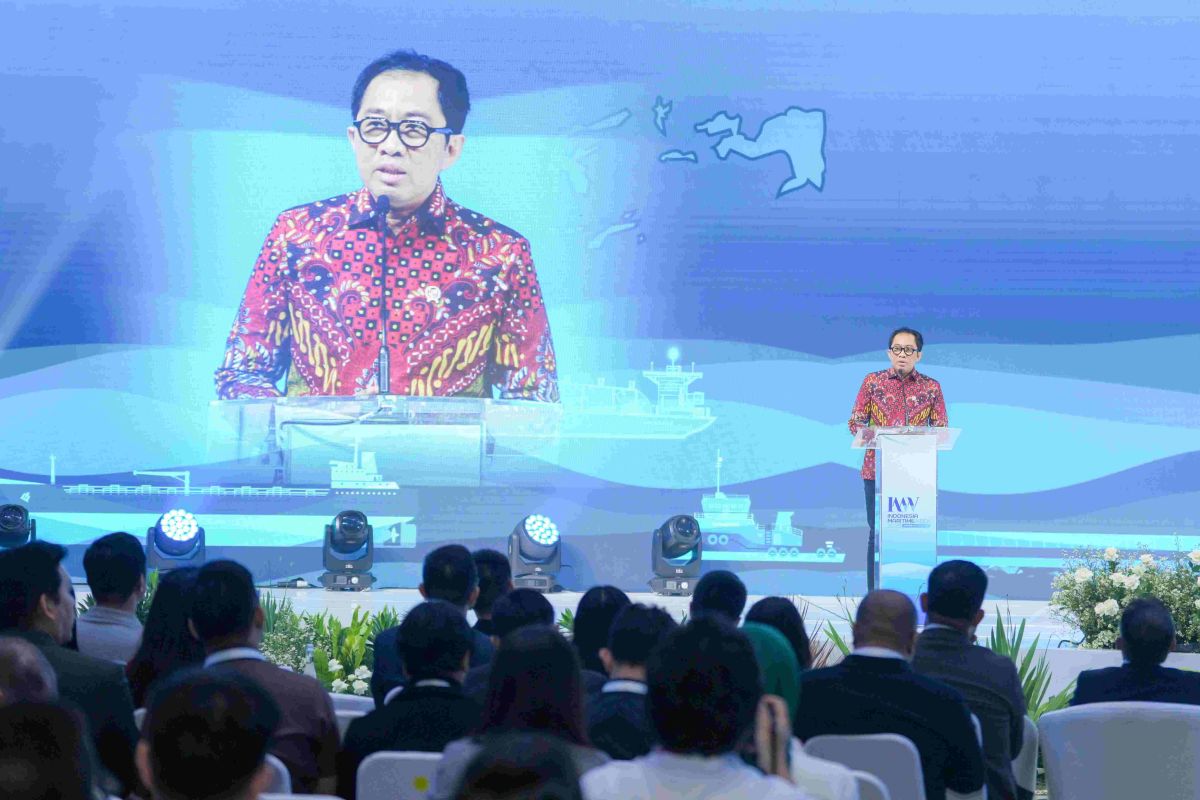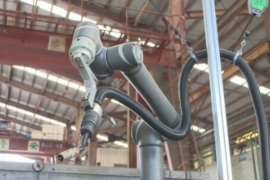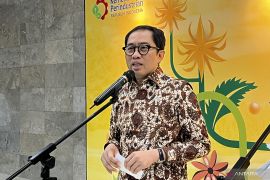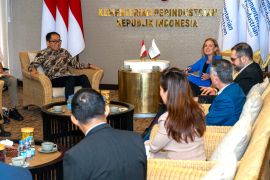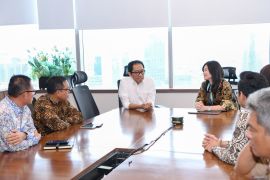"The shipping sector is one of the mainstays of transportation modes, supporting logistics for transporting commodities and passengers,” Riza stated at the 1st Indonesia Maritime Week 2025 Jakarta, Tuesday (May 27).
Currently, 342 active shipyards are spread across 29 provinces, with a building production capacity of 1 million deadweight tonnage (DWT) per year and a repair capacity of 12 million DWT annually. This industry has employed more than 46 thousand workers.
Riza explained that the national shipbuilding industry's innovation capabilities have developed significantly, as evidenced by its ability to produce a wide range of vessels, including merchant ships, fishing vessels, passenger ships, and military or patrol ships.
For example, state-owned shipbuilder PT PAL Indonesia has successfully produced Fast Attack Craft (FAC) for the Indonesian Navy and Landing Platform Dock (LPD) that has been exported to the Philippines.
"This achievement shows that the national shipbuilding industry can meet the demand for high-quality ships, both for domestic and international markets," he remarked.
Currently, there are 127 marine class-certified component companies and more than 560 domestic component level (TKDN) certificates have been issued.
Local content in ship production has reached over 40 percent for certain types of ships.
"This forms a solid foundation for the transformation of the national shipbuilding industry in the future," he affirmed.
At the global level, the shipbuilding industry is undergoing a structural transformation, with digital technology increasingly being adopted in design and production processes.
On the other hand, the global commitment to decarbonization is pushing the world's shipping industry toward green ships.
"Indonesia must be at the forefront of adopting and developing this technology," Riza emphasized.
To this end, the government will prepare a roadmap for the development of the shipbuilding industry, aiming to increase shipyard efficiency and productivity through digitalization, innovate low-emission ship designs, strengthen the TKDN-based component ecosystem, and develop highly skilled human resources through international cooperation.
"We believe the future of the shipping industry is not only determined by the capabilities of each country but by our ability to collaborate," he explained.
He voiced Indonesia's readiness to take on a regional leadership role in cooperation on standardization and joint certification among countries in the Asian region, regional supply chains for ship components, cross-country technological innovation and collaboration, and the promotion of trade and exports of intra-Asian maritime industry products.
He assessed that international ports in the country still need improvement, as the global trade ratio requires at least 25 international ports.
"If these international ports are increasingly opened, of course, it will also provide opportunities for business actors to develop the shipping industry," he noted.
In fact, the government aims to make Indonesia a production center for medium-sized ships in Southeast Asia and a major exporter of merchant and fishing vessels to island countries in the Pacific and Africa.
This target aligns with President Prabowo Subianto’s statement at the Indonesia-Brazil Business Forum in Rio de Janeiro on November 18, 2024, that Indonesia, as a country with the second- or third-largest fish reserves in the world, needs about 40 thousand fishing vessels ranging from 150 gross tonnage (GT) to 300 GT.
With its current capacity and development potential, the national shipbuilding industry has a significant opportunity to meet these needs.
Translator: Ahmad Muzdaffar Fauzan, Yashinta Difa
Editor: Aditya Eko Sigit Wicaksono
Copyright © ANTARA 2025
